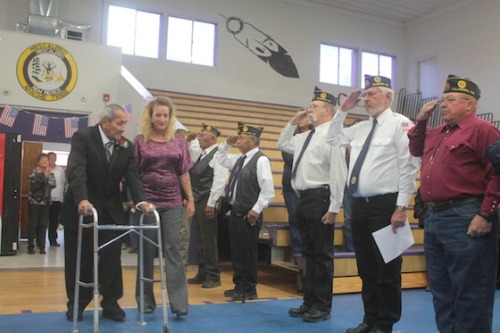Forgotten Warrior: Native Vet Waits 41 Years For Medals Theodore Harvey’s a modest man tha
Forgotten Warrior: Native Vet Waits 41 Years For Medals Theodore Harvey’s a modest man that lives simply. His bed is properly turned out–crisp sheets are stretched tautly across a single frame without a visible wrinkle, though his hands shake with each querulous movement. His magazines,National Geographics for the most part, lie stacked neatly against the windowsill, next to a shadow box celebrating honors won in Vietnam. Those honors, simple bits of metal and cloth to the outsider, mean more to Harvey than nearly anything else in the room. Neither young nor old for his years, Harvey looks all of his 78 hard-lived years–nearly a quarter of them spent fighting, training and waiting on foreign soil. Harvey was 19 when he enlisted in 1954. He fought–valiantly–for 17 years before he was discharged in 1971. He then waited 41 years and three days to receive decorations he should have received half a lifetime ago. Around the tables set up in the Mescalero High School Gymnasium, veterans of different wars–Vietnam and Iraq to name the usual suspects–watched, their individual stories and questions writ large in their expressions and movements. For the young 1Lt. Daniel Hance, recently returned from the sands, the ceremony was a day of honor, glory and well-deserved recognition. Hance’s eyes shone and his hands were steady as he pinned on the Bronze Star. For Jerry Ligon, commander of VVA 1062, there was a hint of sorrow as he fastened the Purple Heart, a match for his own medal, on Harvey’s coat. Theodore Harvey is a Native American veteran that lives quietly in the Mescalero Apache Reservation just outside of Ruidoso, and his story is, unfortunately, far from unique. Native Americans, percentage-wise, serve in greater frequency in the armed forces than any other ethnicity, according to Department of Defense statistics. An estimated 12,000 Native Americans stepped up in World War I, with that number rising to about 44,000 soldiers in World War II–roughly 1/8 of the population at the time. About 42,000 willingly marched in to Vietnam, only 10 percent conscripts,according to the Naval History and Heritage website. There are an estimated 190,000 Native American veterans today, according to the DoD. Yet recognition for these warriors, as well as other critical benefits, lags behind other veterans, many of whom already are struggling to collect their dues. Yet Native Americans are only half that lucky, according to a 2011 report from the National Center for Biotechnology Information, “Healthcare Disparities for American Indian Veterans in the United States." ”AIAN (American Indian/Alaskan Native) veterans have 1.9 times higher odds of being uninsured compared with non-Hispanic white veterans,“ the report states. They also are "significantly more likely to delay care due to not getting timely appointments,” they are unlikely to get through on the phone and frequently have transportation problems. (Read More) -- source link
Tumblr Blog : nativeamericanconnection.tumblr.com
#military#apache#native americans#american indians#recent news#veterans



